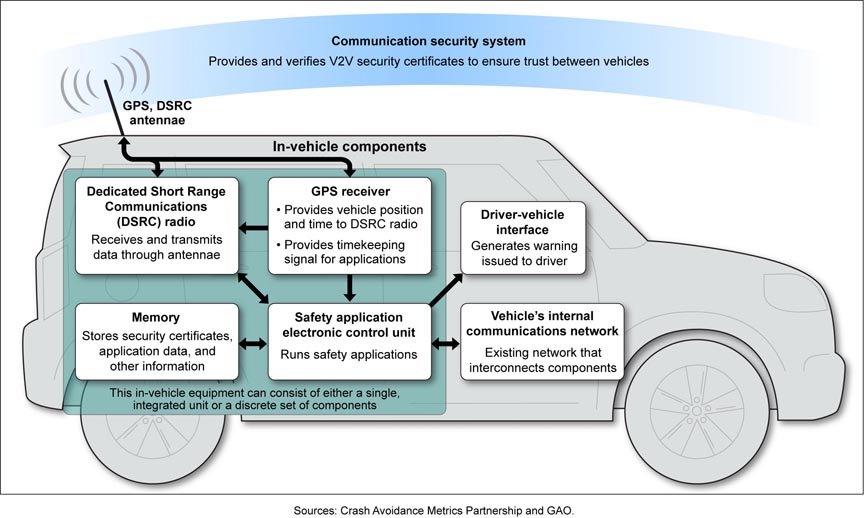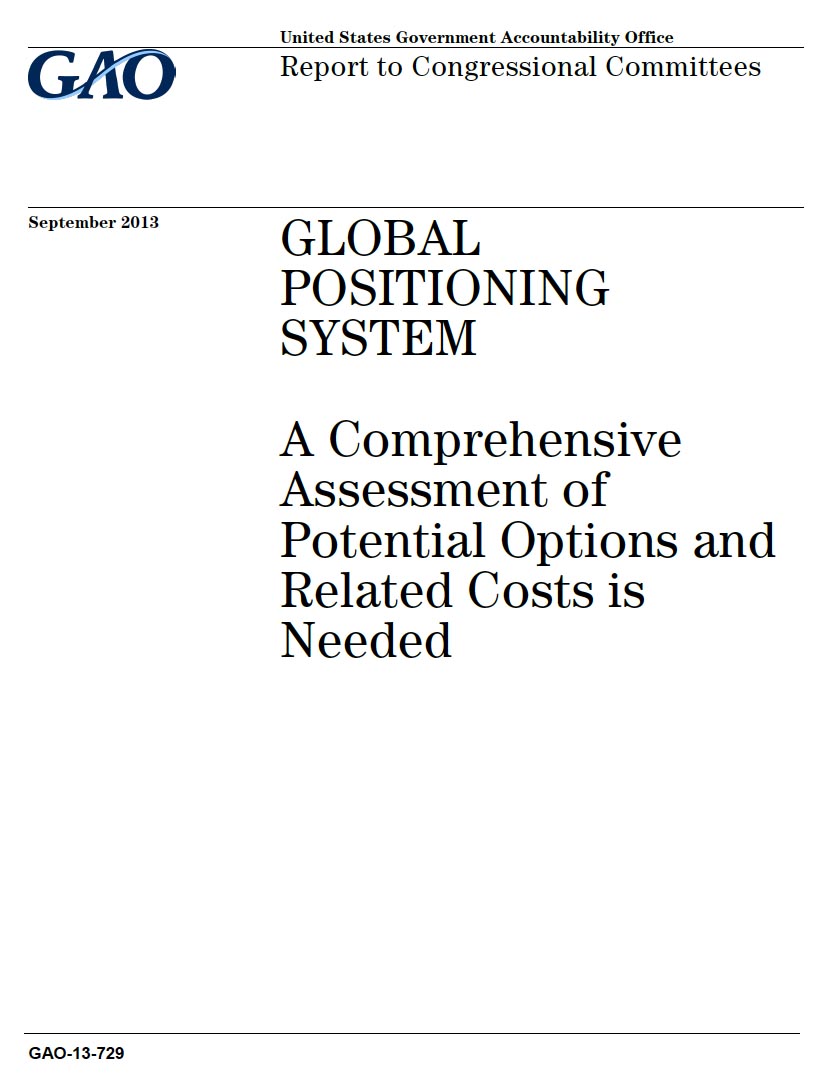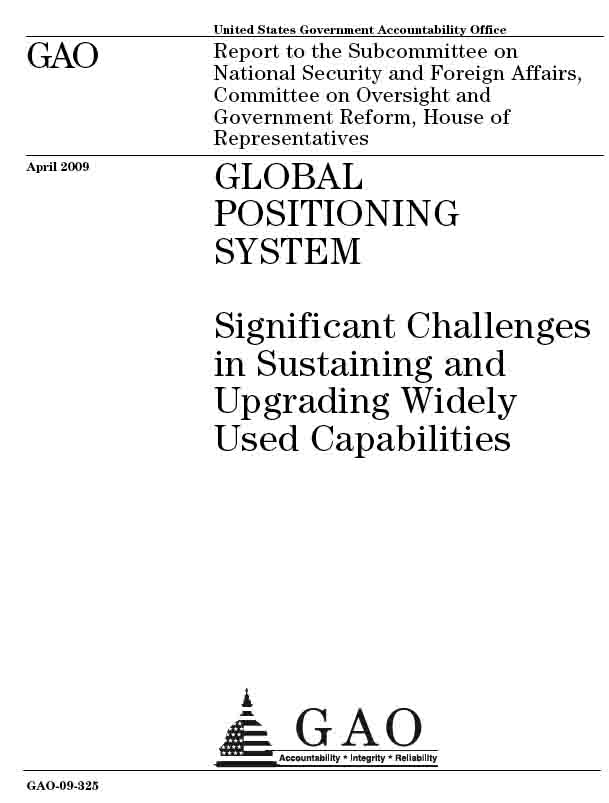 Components of a Vehicle-to-Vehicle Crash Avoidance System. Sources: Crash Avoidance Metrics Partnership and GAO
Components of a Vehicle-to-Vehicle Crash Avoidance System. Sources: Crash Avoidance Metrics Partnership and GAOA Government Accountability Office (GAO) report on intelligent transportation system (ITS) technologies released today (November 1, 2013) identified concerns about GPS accuracy and relative positioning that could limit its use in vehicle-to-vehicle (V2V) systems.
However, U.S. Department of Transportation (DoT) officials responding to the GAO study expressed confidence that the quality of GPS receivers in today’s automobiles will be sufficient to support V2V safety applications.
A Government Accountability Office (GAO) report on intelligent transportation system (ITS) technologies released today (November 1, 2013) identified concerns about GPS accuracy and relative positioning that could limit its use in vehicle-to-vehicle (V2V) systems.
However, U.S. Department of Transportation (DoT) officials responding to the GAO study expressed confidence that the quality of GPS receivers in today’s automobiles will be sufficient to support V2V safety applications.
The issues were raised in the course of a GAO assessment of V2V technologies presented to the presented to the U.S. House of Representatives’ Committee on Science, Space, and Technology. GAO examined the state of development of V2V technologies and their anticipated benefits; the challenges that will affect the deployment of these technologies and any actions that DOT is taking to address them; and what is known about the potential costs associated with these technologies.
In conducting its study, GAO reviewed documentation on V2V technology-related efforts by DoT and automobile manufacturers, visited a pilot study of V2V technologies in Michigan, and interviewed DoT officials, automobile manufacturers, and 21 automotive engineering experts identified by the National Academies of Sciences.
“Three experts we interviewed expressed concern that GPS used by V2V technologies may not provide sufficiently accurate vehicle position for some V2V applications,” the report authors said. Two experts also suggested that the GPS relative positioning through which V2V technologies determine vehicle position “may not be accurate enough, given the need for precise vehicle location data to support V2V software applications.”
When the GAO asked DoT officials to comment on the study, however, they pointed to data collected by the agency about the performance of GPS and V2V communications during more than 20,000 miles of testing in diverse geographic and environmental conditions, adding that the department “is confident that the automotive-grade GPS being used for V2V safety applications is sufficiently accurate.”
Furthermore, noting that automobile manufacturers already install sensor-based crash avoidance technologies in some vehicle models, the GAO report concluded that “vehicles that already have GPS chips installed for navigation purposes may not need an additional GPS chip specifically for V2V technologies purposes.”
The fact that GNSS technology is already being incorporated into many vehicles could substantially reduce the cost of implementing V2V safety applications. “Although the costs of in-vehicle V2V components are difficult to estimate at this time, they may be modest compared to the price of a new vehicle,” the GAO report stated, citing comments by representatives of the Crash Avoidance Metrics Partnership (CAMP) Vehicle Safety Communications 3 (VSC3) Consortium that in-vehicle V2V components — including the DSRC components and GPS receiver—are already commercially available at a relatively low cost.
DoT is still researching the best means to determine vehicle location through relative positioning. The agency also said that it collected additional data during the DoT’s Connected Vehicle Safety Pilot Program to help ensure that GPS positioning limitations do not negatively affect the performance of V2V technologies.
A final GNSS-related issue raised by the GAO involved location privacy.
“Public interest groups we interviewed said that overcoming concerns about privacy under a system that involves the sharing of data among vehicles will pose a challenge,” the GAO authors said. “One group suggested that the possibility that V2V data could be obtained by third parties such as law enforcement agencies could harm the deployment of these technologies. Similarly, one expert suggested that public acceptance of V2V technologies might be limited without rules prohibiting the use of vehicles’ speed and location data to issue tickets or track drivers’ movements. Three experts we interviewed suggested that legislation may be needed to limit the potential use of V2V data.”





